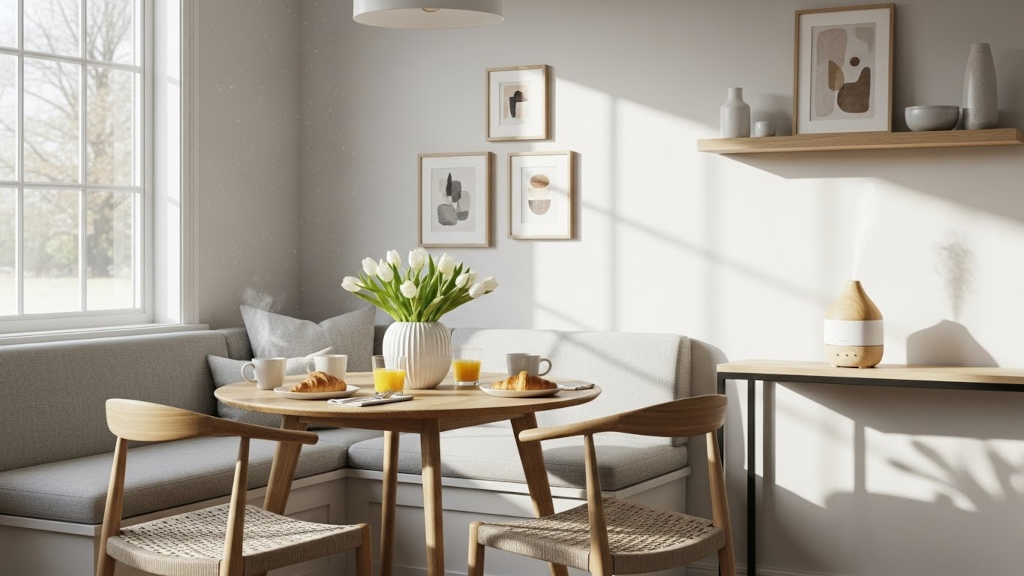The bedroom is more than a place to sleep. It’s where the day slows, emotions settle, and connection deepens, whether with ourselves or someone we love. Scent plays a powerful role in shaping that environment. When chosen with intention, fragrance can soften the edges of stress, invite warmth, and support deeper emotional rhythms.
This is not about masking the air. It’s about layering a gentle atmosphere that meets your bedroom’s purpose: quiet, closeness, and a sense of retreat.
Fragrance and the Tone of the Room
A bedroom carries many energies. Sometimes it is simply a place of stillness. Other times, it becomes a space for reflection or tenderness. The fragrance you choose can guide the tone, helping shape how the room feels and what it invites.
For evenings when you seek rest, soft oils like lavender, chamomile, or neroli create a sense of calm. Their profiles are round and steady, helping to ease tension without taking up too much space. These scents work well during winding-down routines, encouraging the body to slow and the mind to follow.
For moments of intimacy, the tone may shift toward something more grounded. Fragrance oils with warm base notes think amber, tonka, or a soft musk, add dimension without being intrusive. Their subtle complexity offers a feeling of closeness that supports emotional and physical connection without overwhelming the senses.
Reflection and solitude may call for something more open. Gentle florals, a hint of green tea, or faint resinous woods can help support that inward focus. These oils offer just enough presence to keep the space from feeling bare, while still allowing the mind to breathe.
Creating a Bedroom Ritual
Fragrance often works best when paired with rhythm. Developing a bedroom ritual that includes scent can train the senses to respond more quickly to the cues of rest and reflection. Over time, the simple act of turning on a diffuser becomes a signal to the nervous system that it is time to release the day.
Cold air diffusers are ideal for this. They disperse oils without heat, preserving the integrity of the fragrance while keeping the room cool and breathable. Start the cycle about 15 to 20 minutes before you plan to settle in. This allows the room to fill gently and creates a calm transition between active and quiet time.
You might also reserve a specific scent for the bedroom, used only in that space. This reinforces the boundary between rest and the rest of the world. Just as lighting or music changes the mood, so too does scent, especially when it becomes part of your sensory memory.
Balancing Scent with Texture and Light
The fragrance of a bedroom does not exist in isolation. It blends with texture, color, and light. Choosing oils that align with these elements can help the scent feel integrated rather than separate.

In spaces with soft linens, low light, and pale color palettes, delicate oils with floral or herbal profiles tend to shine. They mimic the softness of the surroundings, adding to the sense of peace.
In bedrooms styled with deeper hues, velvet textures, or layered patterns, more sensual oils can work beautifully. Think of blends that carry subtle spice, resin, or smooth woods. These fragrances mirror the visual depth of the space and encourage stillness with just a touch of drama.
Fragrance should never dominate. The goal is a backdrop that supports the experience without pulling focus. Use light diffusion settings in smaller bedrooms, and avoid placing the diffuser too close to pillows or fabrics where the scent might collect too strongly.
Seasonal Adjustments for Scent
As seasons shift, so do our needs. The bedroom in winter asks for warmth, stillness, and comfort. Oils like vanilla, cedarwood, or gentle spice can offer that embrace. In warmer months, crisp citrus, mint, or floral waters provide a cleaner, more refreshing tone that feels aligned with open windows and light linens.
You don’t need to change scents constantly, but having a few blends you rotate throughout the year allows the room to feel responsive and alive. Let your surroundings guide your scent decisions. Heavier blankets and overcast skies may call for something rich. Light bedding and longer days might invite a scent that breathes.
Supporting Emotional Wellness
The bedroom is often the only space where we fully let go. It is where we carry emotions we’ve hidden throughout the day. Fragrance can support this vulnerability by offering grounding, openness, or a sense of emotional calm.
Scents with floral or resin-based profiles have long been used in emotional wellness. Rose, frankincense, and sandalwood, for example, each offer a kind of quiet confidence. They do not demand attention, but they remain present, guiding the energy of the space toward stability.
This kind of sensory support can be especially helpful during times of transition, grief, or introspection. When we cannot find the words, fragrance often steps in with a language all its own.
Final Thought
The scented bedroom is not just about sleep. It’s about how we return to ourselves. Whether you use fragrance to wind down, to connect, or to sit in silence, the goal is the same: presence. With the right blend and a bit of intention, scent becomes part of how we care for ourselves. It supports the unseen layers of comfort, romance, and reflection that turn a bedroom into a sanctuary.
Let scent help carry you there.
Related Reading: Bedroom Fragrance








